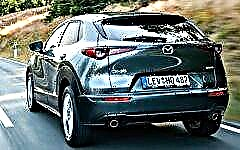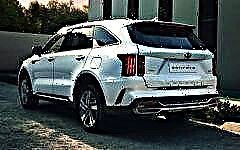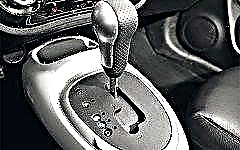

The content of the article:
- Features of variator driving
- Pros and cons of the variator
- About oil
- CVT operating instructions
- No need to overload
- Off-road is bad
- Can't be towed
- Look at the sensors
A continuously variable transmission, commonly referred to as a variator, was first used in the late 50s. But this experience could not be called successful, so they forgot about the variator for a while. But in the 90s, he was remembered again, and this time the idea became widespread.
The CVT is the ideal of simplicity.The principle of operation is also not particularly complicated. There are V-belt and V-chain variators.
What surprises can you expect from them? The answer is in this article. Here we will talk about eight things you need to know about the variator.
1. Features of variator driving

CVT transmission is designated by the Latin abbreviation CVT. In terms of its functionality, it is not much different from other checkpoints, but the principle of their operation is completely different. There is no jolt when changing gears.
This happens because the diametrical plane of the driven and driving discs is corrected, and the acceleration of the machine occurs smoothly, without jerks. The driver does not need to be distracted by switching the speed mode. Thanks to the automatic system, the acceleration time is reduced, the fuel is consumed more economically. The most optimal mode of the propulsion system is also selected automatically.
When using the variator, no noise will be heard even with a very high degree of engine load.
Even in the case of a complete "drowning" of the accelerator, the sound, which is usually emitted by sports cars, the driver will not hear. Excessive load on the unit is removed using an intelligent electronic system.
2. Pros and cons of the variator

The use of cars with CVT compares favorably with manual transmissions in some points.
The obvious advantages of a CVT gearbox include the following:
- A car with a CVT picks up speed very quickly;
- The car accelerates smoothly, without jerking;
- Being in a traffic jam or rolling on a slope, the car will not stall;
- No noise is heard even when driving at high revs;
- The use of a variator is a serious fuel economy;
- The continuously variable transmission is much safer for the environment than its mechanical counterparts.
But there were some drawbacks here, which can cause a lot of different troubles to the driver:
- Cars with CVTs cannot run at high speeds for a long time;
- The variator box requires constant maintenance. It requires frequent replacement of oil and oil filters - after 30,000 km, at least;
- In order for the transmission to work correctly, the variators should be filled with a special fluid, which should also be changed periodically. And it is not cheap at all, and it is not easy to find it either;
- The variator can fail if the driver often practices harsh braking;
- Installation of the variator is possible only on machines with a capacity not exceeding 220 hp;
- Automation repair will cost much more. The situation is further complicated by the fact that in our service centers you rarely meet real specialists who understand the device of variators;
- Even if one of the sensors fails, the entire gearbox may suffer.
3. About oil

The car owner must definitely monitor the condition of the engine oil. This axiom takes on even more meaning when it comes to continuously variable transmissions. The variator is very sensitive to the working volume of the oil and to its other specifications - frequent fluid changes will be simply necessary here.
The oil in the CVT is designed to lubricate the rubbing parts. Another of its functions is to prevent slippage. For all the exoticism of the oil for a continuously variable transmission, it is inexpensive.
All information about the oil that should be used in an automatic transmission is in the vehicle's documentation. By the way, you still need to be able to change the oil in a box with special characteristics. If this aspect is ignored all the time, then this will certainly cause a breakdown, the cost of eliminating which will not please the car owner.
The oil for use in the variator must be selected. If you cannot find information about the required consumable, you should contact one of the service centers for the help of specialists.
Failure to follow this advice can lead to serious damage to the gearbox.
A complete oil change is recommended after 60,000 km. Of course, this data can change in plus or minus, depending on several factors. It is about the manufacturer and the operating conditions of the vehicle. If we talk about Russian conditions, then here we can talk about reducing the time to 30,000 km.
4. Instruction for the operation of the variator

The manual transmission shift knob is marked with letters. Here's what these letters mean:
- P - parking mode. The handle is put in this position when the car is parked for a long time. The lever should be in the same position during ignition;
- D - this letter means movement;
- N Is something like neutral. The lever must be in this position when parking on an incline;
- L - driving at higher speeds and when braking by the motor. The handle should take this position when driving off-road, downhill or when driving with a trailer.
Some car brands also use the following positions and modes:
- S - sports. The motor runs at maximum speed;
- E - economical. In this position, fuel will be consumed to a minimum.
5. No need to overload

When using a car with a variator, it is highly discouraged to sharply increase the load - the increase should only be smooth, otherwise a visit to the service station cannot be avoided. This is a significant disadvantage of this mechanism, and this problem still remains unresolved. In the cold, the variator must be warmed up, since the cooled oil will very badly disperse through the system, which may cause some parts to remain without lubrication.
The device of the variator is significantly different from the device of other gearboxes, therefore, it needs to be warmed up in a special way. Warming up as a mechanical box in this case will not work.
This operation should be done as follows: the car is put in "neutral" for a while (4-5 seconds will be enough). This will help warm up the clutch slightly. You can only get under way when the car is fully warmed up. At this moment, all the elements of the gearbox have not yet fully warmed up, so you should not sharply increase the speed for at least a kilometer after the start of movement. Even if the fuel consumption will be slightly overestimated, the driver will be able to save money on replacing the gearbox, because the variator model is a rather capricious thing and can easily break down if used incorrectly.
The warm-up time of the box directly depends on the air temperature - the lower it is, the longer it takes to warm up. Experts recommend not to operate cars with manual transmission at all when the temperature drops to minus 35 degrees. But this is not always possible. If you happen to go on a trip in the cold, then you need to warm it up for at least half an hour, and the ride itself should take place in a gentle mode.
As you know, it is almost always cold in Finland, which is probably why it was there that an alternative way of warming up cars with manual transmission was invented.There, some car models are equipped with special plugs, through which they are connected to the electrical network. Thus, the vehicle warms up quickly. These cars have characteristic cutouts on the bumpers.
6. Off-road is bad

It is better to operate cars with variators on the track - it is undesirable to do this on off-road. Of course, there are also off-road vehicles with CVT, but experts rank them as a parquet flooring class. Cars with continuously variable transmissions will show themselves well in urban conditions; it is not recommended to cut them across fields and forests.
These are not just words, because the CVT can be seriously damaged if the car hits a bump or falls into a hole. Other irregularities of the road surface are not recommended for him either. Such adventures can be fraught with the most serious consequences for cars with a CVT.
7. Can't be towed

The unit can be seriously damaged if the CVT vehicle is towed by another vehicle. By the way, when slipping, certain problems may also occur.
The vehicle operating instructions provide for the option of towing another vehicle. If you cannot do without this, then towing should be carried out in strict accordance with the instructions. But even in this case, the possibility of the occurrence of breakdowns cannot be completely ruled out. This is especially true for vehicles with significant mileage.
For the above reasons, towing another vehicle with a CVT vehicle is highly discouraged. Here, again, you need to look at the data sheet. It contains all the information regarding the weight of the transported vehicle.
Slip can also be dangerous. If the machine gets stuck in the mud, it is best to let go of trying to get out on your own, otherwise it can lead to wear of the spline joints. The resource of the gears will also be significantly reduced. But the repair of this unit can hit your pocket hard.
8. Look at the gauges

Control devices must always be in good working order - you need to constantly monitor them. If one of the sensors stops functioning normally, this will certainly affect the operation of the entire unit.
If the speed sensor is damaged, the transmission belt is set to the middle position, which leads to emergency engine braking. In this case, the belt can be severely deformed. The drive may even break if the movement is carried out at a high speed. The CVT will last longer if the revs are slightly reduced.
For those who want to buy a used car, there is one rule: you need to change the speed sensor on time. You should buy only original versions of devices and from trusted dealers. You also need to do with all other sensors. They should be changed as necessary.
Summarizing the above, we can state:
- Recklessness will necessarily lead to a decrease in the service life of the variator box;
- Travel outside the city should be limited;
- An unheated car is a possible cause of a breakdown;
- It is imperative to monitor the oil level;
- The status of monitoring devices also needs to be monitored.
The driving style of a car enthusiast and the state of the roads in a particular region are all the main factors influencing the decision to purchase a car with a CVT.
Perhaps the risks indicated here will seem exaggerated to someone - some drivers say that they operate cars with CVT without restrictions, but it is still better to follow certain rules so that you do not have to spend money on repairs.











